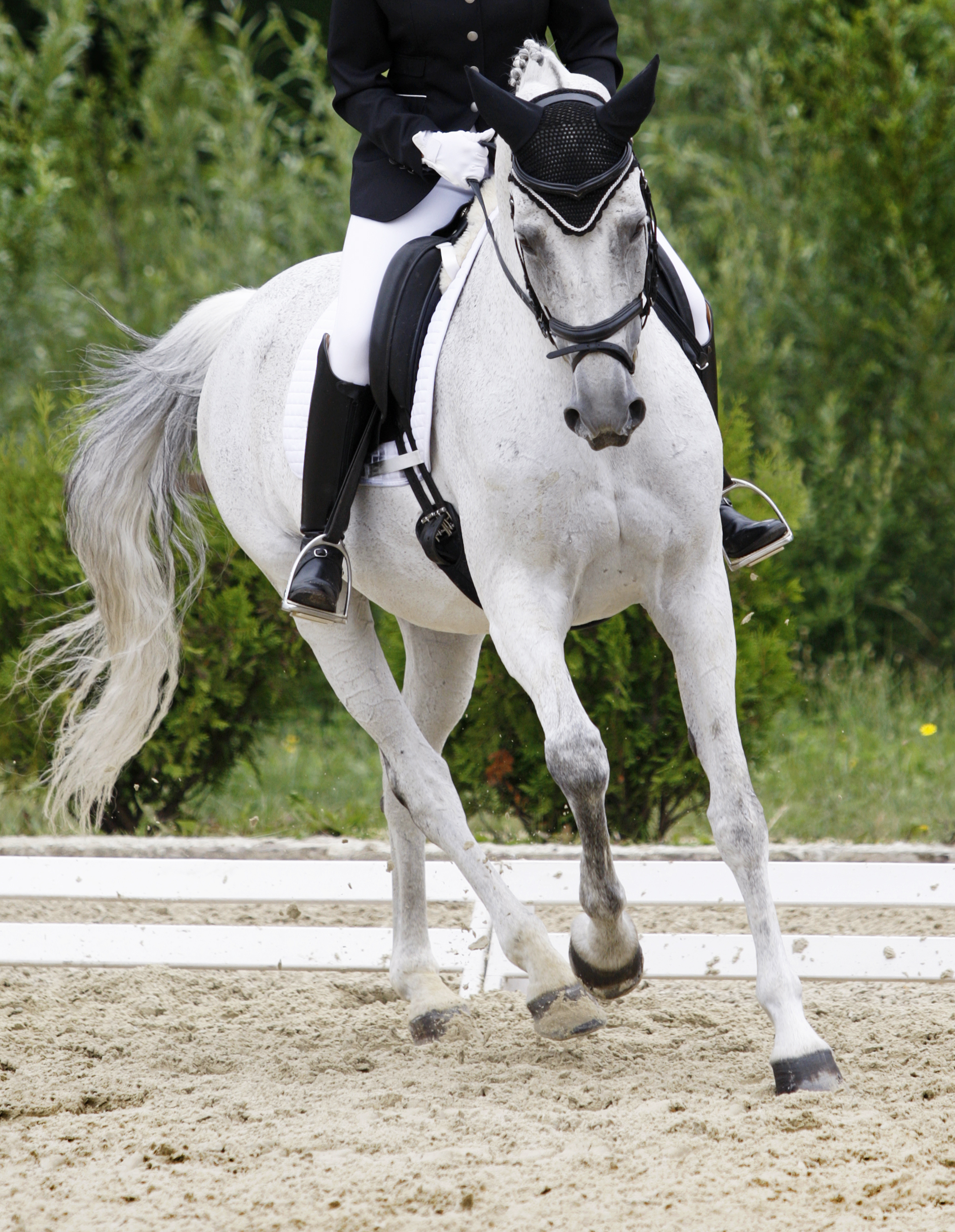Q: I would like some advice on how to regulate my horse’s canter tempo. He is a 5-year-old warmblood gelding with a big, bounding canter stride that tends to get faster and faster. He often stays slow enough on circles, but he picks up speed when we go on straight lines. Sometimes my half halts work in the canter, and it’s easy to keep him at an appropriate tempo, but other times he is harder to bring back. He also used to get very quick in the trot, but he now accepts half halts and usually maintains a forward, but not quick, trot. He generally is calm and doesn’t seem nervous. We are making progress, but I would appreciate any hints you could give me about why he does this and how to help him maintain a slower, steadier tempo in the canter.
A: Your problem is common. In the beginning of many horses’ training, they have difficulty maintaining their balance and, therefore, a quiet tempo in the canter. This imbalance is usually strength related. The horse’s balance in the canter is delicate, and when a rider’s weight is added, the untrained horse can maintain a quiet tempo only if he has natural athletic ability or if the rider’s abilities are of such quality that she does not interfere with his balance.

You can minimize this interference by paying close attention to the quality of your seat and hands. Don’t push your horse through movement in your seat, but rather use your seat to hold him steady and quiet. Tighten your abdominal muscles to hold your seat steady. Make sure your horse is round and on the aids before you ask for a canter depart so he can canter without leaning on your hands. The self-carriage necessary for a quiet canter tempo can be obtained only when your horse carries himself instead of leaning on your hands.
A strong, balanced horse carries his weight more on his haunches. Often, the horse’s ability to carry more weight on his haunches and not to run on his forehand can be developed through better alignment, or straightness. There are many ways to get your horse straighter. Here is one that works for me: Concentrate on keeping your horse’s neck straight at the base-in front of the shoulders-and the rest of the body will follow.
This alignment must be practiced diligently at the walk and the trot both on straight lines and with bend. Try riding patterns that incorporate many transitions to challenge yourself and your horse to say alert. Suppling him thoroughly in the walk and trot through many changes of rein, tempo and direction, as well as many turns on the forehand, leg yields and transitions, will enable you to prepare him for a balanced canter. As his ability to maintain his balance in the trot increases, so will his steadiness in the canter.
Your horse must be strong to lift his entire weight off the outside hind in the canter depart. By riding many canter departs and always bringing him back to a walk when he starts to rush, you will increase his strength. Therefore, this is a valuable exercise.
As you practice canter departs, you may want to practice counter-canter departs as well. A few strides in counter-canter on a slight bend, like a very shallow single loop on the long side, will definitely increase your horse’s awareness and his balance.
When cantering on a circle, you will have more success at maintaining a slower tempo if you make your horse straighter on the circle. A horse travels naturally on two slightly offset tracks, rather than with perfect straightness. Because you can seldom straighten a horse by pushing his haunches out, you have to straighten him by positioning his shoulders in front of his haunches. So, to get more straightness on the circle, you may want to think about-though not actually perform-shoulder-fore as you prepare for the canter.
Also try riding your horse on a 20-meter square instead of a 20-meter circle, utilizing every corner to rebalance him. Riding slightly deeper into the corners will give you a little more leverage and will train him to become stronger and more accurate.
There are many other exercises that will also help your horse develop the strength for a balanced canter. Ride up and down hills, jump small gymnastics, ride over cavalletti and longe.
It will take time to build the physique that your young horse needs to carry your weight with ease and therefore with beauty.
Claudia Garner is a German Equestrian Federation licensed instructor and trainer (Bereiter FN). She and her husband own and operate Horrell Hill Dressage Center near Columbia, S.C., where she teaches and trains at all levels.











